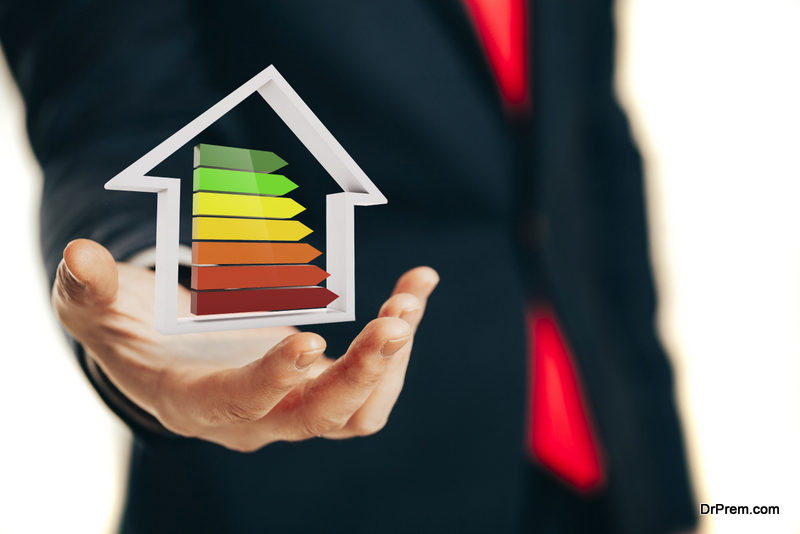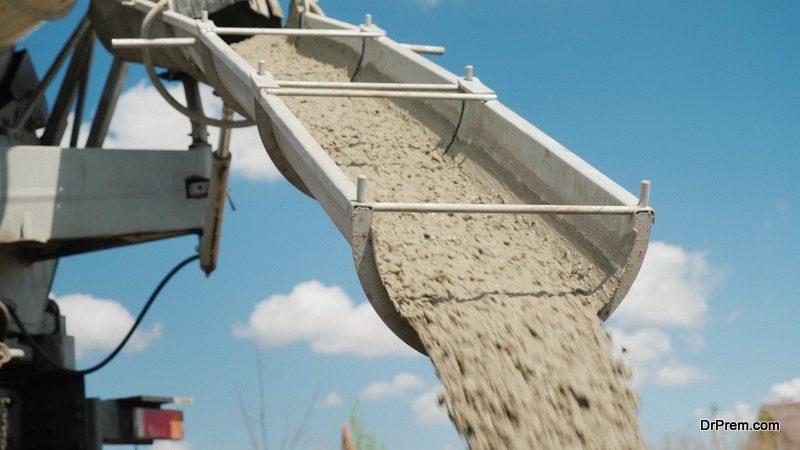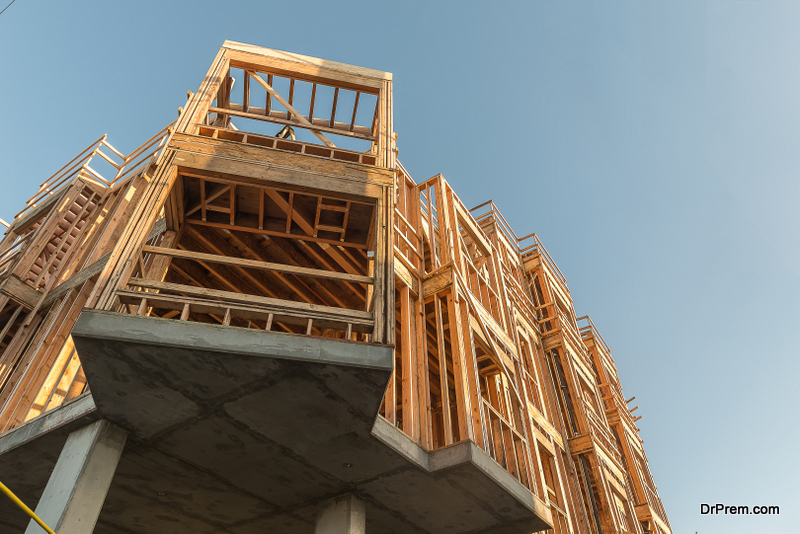30% of the world’s energy is consumed by commercial/industrial buildings, and you can imagine the % consumed by residences. Electricity consumption and usage of natural resources has to be reduced to meet the global environmental standards. Environment friendly buildings are beneficial for the health of the individuals and they ultimately become financially viable too. Take a look at the latest environmental trends in construction:
11 latest environmental trends in construction
Net-zero buildings
 One of the environmental trends in construction – that of net-zero construction – will rise. Net-zero buildings are those which neutralize carbon emission or redress the same, as they have very low water consumption, proper waste disposal systems and gray water systems in place. The World Green Building Council has set the goal of accelerating the development of net-zero buildings by 100% by the year 2050. Responsible builders as well as eco-friendly home and commercial establishment owners will be the ones to lead the net-zero building movement.
One of the environmental trends in construction – that of net-zero construction – will rise. Net-zero buildings are those which neutralize carbon emission or redress the same, as they have very low water consumption, proper waste disposal systems and gray water systems in place. The World Green Building Council has set the goal of accelerating the development of net-zero buildings by 100% by the year 2050. Responsible builders as well as eco-friendly home and commercial establishment owners will be the ones to lead the net-zero building movement.
Building smart and climate resilient buildings
Extreme climatic conditions are already seen in different parts of the world – including wildfires, droughts, and tsunamis and flooding. Buildings which are resilient enough against climatic conditions using green building technology, is another of the latest environmental trends in construction. Building owners will invest in new building technologies to protect and mitigate environmental damage.
Eco friendly concrete
 Amongst the best environmental trends in construction which has burst on the scene is the eco friendly concrete. These types of concrete are made from recyclable materials or sustainable materials such as ash, hemp or those with iron carbonate bases. Self-healing concrete, which is a mixture supplemented with bacteria which produces lime, is the concrete of the future. The bacteria is activated by water, so when any cracks in the building is exposed to moisture, the bacteria fills up the gap with limestone.
Amongst the best environmental trends in construction which has burst on the scene is the eco friendly concrete. These types of concrete are made from recyclable materials or sustainable materials such as ash, hemp or those with iron carbonate bases. Self-healing concrete, which is a mixture supplemented with bacteria which produces lime, is the concrete of the future. The bacteria is activated by water, so when any cracks in the building is exposed to moisture, the bacteria fills up the gap with limestone.
Convergence of DES and smart buildings
Smart building/s will integrate DES or Distributed Energy Systems. The energy use of smart buildings can be dramatically reduced with the use of renewable energy systems. DES covers energy in electricity in cooling and heating, which offers building owners as well as energy consumers to reduce the costs as the improve the reliability of power sources.
Solar power is gaining ground

There is a worldwide trend of installing solar panels on buildings, both under-construction and older buildings. A decrease in the cost of panels and batteries, government concessions and subsidies are some of the main reasons why owners are installing solar panels on their buildings. Besides, the panels would be cost effective over time, save conventional energy, and if a surplus is generated, then the owners can sell it back to the grid.
Lithium-ion batteries, which are utilized in electric cars, would most likely be available for home and business use. The batteries will be able to store the solar electricity required for night-time use. Thus, solar power has the potential to be the main source of energy for all home and business needs.
Incorporate indoor air monitoring systems in buildings
Surrounded by pollution both outdoors and indoors, the global population is seeing a decline in the health of people. The environmental trends in construction which will continue for decades is the inclusion of indoor air monitoring systems in any smart building, due to the focus on wellness and health.
Studies have shown strong correlation between high levels/concentrations of carbon dioxide and reduction of cognitive performance in workplaces. IoT based monitoring solutions will be the economical solutions to monitor and enhance IAQ or Indoor Air Quality. Appliances and gadgets which have IoT integration will play more than one role in IAQ monitoring.
Water conservation systems
 Gray water systems, water/rain harvesting, water-conserving fixtures in the home, landscaping using native plants and energy-efficient cooling towers are environmental trends in construction. Water is a precious natural resource which depleting by the day, so the conservation and recycling of water are features in modern building construction all over the world.
Gray water systems, water/rain harvesting, water-conserving fixtures in the home, landscaping using native plants and energy-efficient cooling towers are environmental trends in construction. Water is a precious natural resource which depleting by the day, so the conservation and recycling of water are features in modern building construction all over the world.
Passive building design
One of the green building trends is the passive building design, which lowers energy consumption by maximizing the natural light and natural heating and cooling. This reduces the energy as well as lighting costs which frees up the budget for other improvements. Besides, passive building designs have a very strong positive effect on people’s productivity.
Biophilic design
 There was a time when buildings were designed to keep out nature, biologically as well as psychologically. However, in the past few years, green building technology has evolved to the extent that buildings reflect biophilic design which includes nature as part of the design and décor elements.
There was a time when buildings were designed to keep out nature, biologically as well as psychologically. However, in the past few years, green building technology has evolved to the extent that buildings reflect biophilic design which includes nature as part of the design and décor elements.
Biophilic design, according to the experts, can influence the inner biorhythms of humans by changing the patterns of light and shadow during the daytime. This is achieved by designing buildings in a way that they capture and follow the sun’s movement through the proper placement of windows, patterns as well as architectural details.
Wellness and health as planned features in new developments
Builders now have to integrate wellness and health in their developments and buildings to attract the health conscious millennials, who are fond of a green lifestyle. Constructions using materials which do not release harmful emissions indoors, HVAC systems which enhance health yet use less energy and many other green technologies are being used to attract the eco friendly customer.
Sustainable landscaping
 Environmental trends in construction and building are not restricted just to the buildings, but are extended to the surroundings as well. The trend is not for a green lawn which requires a lot of water, but to plant low maintenance, native plants which do not require much water. Plants which are drought resistant can help to save water and do not need fertilizers and pesticides to grow either. Sustainable landscaping is one of the trends which we will see in 2019.
Environmental trends in construction and building are not restricted just to the buildings, but are extended to the surroundings as well. The trend is not for a green lawn which requires a lot of water, but to plant low maintenance, native plants which do not require much water. Plants which are drought resistant can help to save water and do not need fertilizers and pesticides to grow either. Sustainable landscaping is one of the trends which we will see in 2019.
Environmental trends in the building and construction design will make a huge difference to the planet and help to preserve precious raw materials by saving energy in the operation and maintenance in future.


